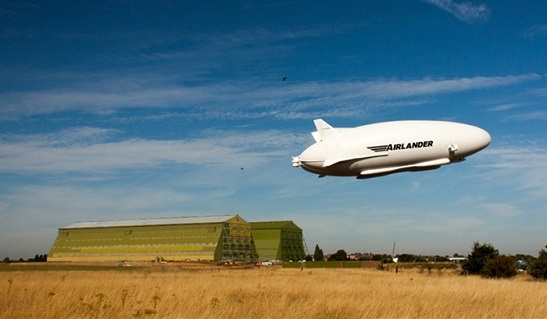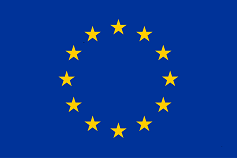
Hybrid Air Vehicles Limited, based in Bedfordshire, is the company behind the highly publicised Airlander.
The Airlander is a “hybrid” of an aeroplane and an airship – 40% of its lift comes from the aerodynamic wing shape of the aircraft, and 60% from the helium fill. Hybrid Air Vehicles aims to revolutionise transport through The Airlander; its ability to remain airborne for weeks, lends itself to game-changing capabilities in surveillance, patrol and search tasks. It can operate without a runway and brings a new and cost-effective means of transport to remote regions. Its green credentials mean it has been a showcase for the low carbon economy.
The aircraft will be used for commercial purposes such as freight, remote access, aid distribution, advertising, surveillance, communications and luxury passenger transport.
In April 2015, Airlander was granted EU funding from the Horizon 2020 programme, drawn from the ‘Smart, green and integrated transport’ Societal Challenge due to Airlander’s alignment with the challenge.
Horizon 2020 provides funding for resource efficient transport that respects the environment by making aircraft, vehicles and vessels cleaner and quieter to minimise transport’s systems’ impact on climate and the environment, by developing smart equipment, infrastructures and services and by improving transport and mobility in urban areas.
The Horizon 2020 funding, worth €2.5m, was used to help create a regulatory framework to allow this type of vehicle to be used in Europe, focussing on receiving certification from the European Aviation Safety Agency (EASA) for hybrid airships and transferring the technology from military use to civil. Achieving EASA certification resulted in a fully specified civil variant, an engaged regulator, approved regulations and significant risk reduction for commercial customers, thereby allowing orders to be made. Read more about the benefits of EU funding in Aerospace Policy Adviser, Richard Gale’s blog.
Chris Daniels, Head of Partnerships and Communications at Hybrid Air Vehicles, said:
Without EU Horizon 2020 funding the project would not have accelerated so quickly. Hybrid Air Vehicles were awarded substantial funding from the EU Horizon 2020 programme which may have taken a much longer time and used a lot of resource to accrue through other means. This funded a significant milestone where Airlander developed a regulatory framework for EASA certification of hybrid airships – an industry first.”
Hybrid Air Vehicles is a great example of an SME whose agility was facilitated by EU funding – the Horizon 2020 approach ensures new projects get off the ground quickly, achieving results faster. The funding enabled Hybrid Air Vehicles to pass a significant milestone of attaining EASA certification, which lead to an increase in private investment due to its permittance to fly.
The supply chain for Airlander is predominantly UK-based, consisting of mainly specialist SMEs covering the length and breadth of the UK.
Four of its main suppliers are:
- AGC in Somerset manufacture the Airlander fins
- Forward Composites in Huntingdon manufacture the cockpit and cabin
- BOC in Thame supply the helium
- Scotland Electronics in Moray, Scotland, provide specialist controllers on the aircraft.
Airlander has already created more than 100 jobs, including 3 aerospace apprenticeships, within Hybrid Air Vehicles and this is forecast to triple as production ramps up. The company estimates that over 1,100 jobs will be created in the UK supply chain in the period to 2020.

This project has received funding from the European Union’s Horizon 2020 research and innovation programme under grant agreement no.672032
For more #SMEsuccess case studies, visit the #SMEsuccess homepage here.





